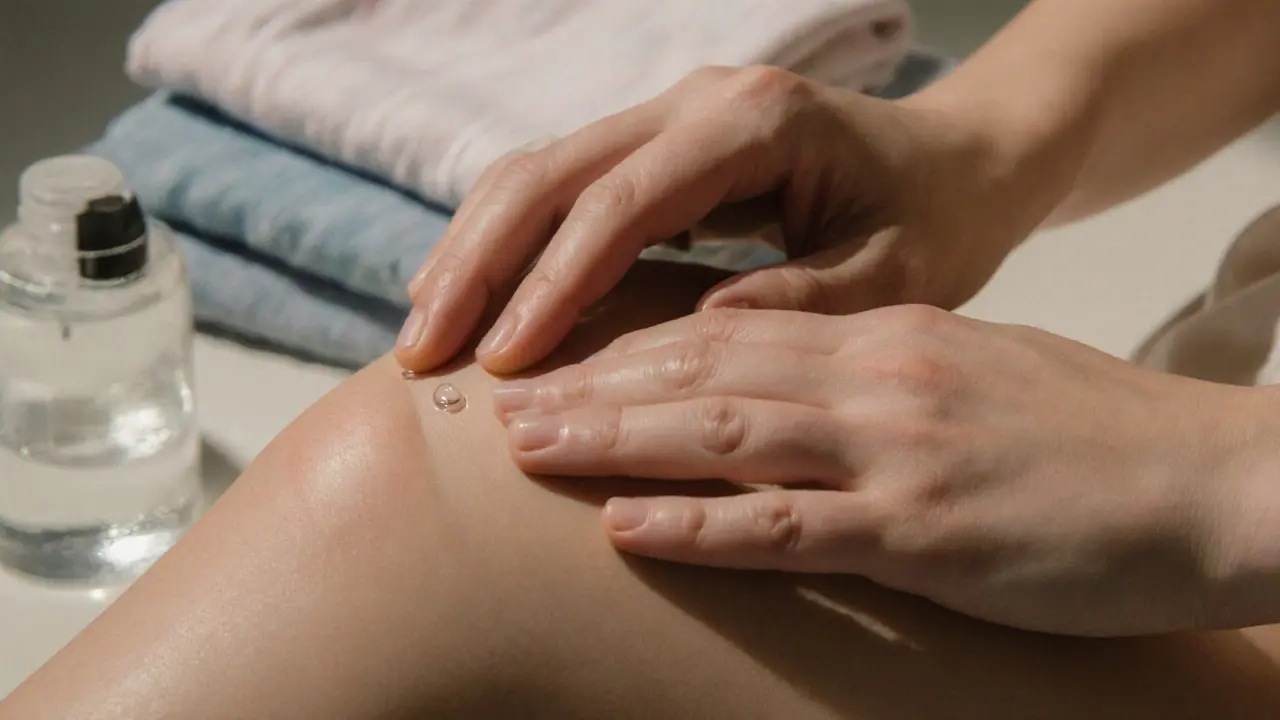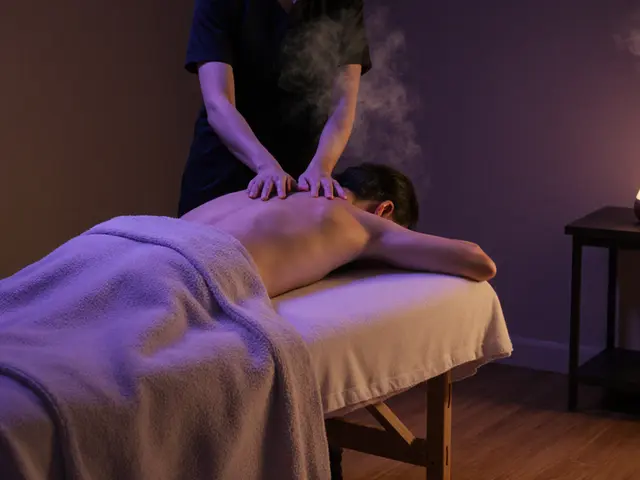Classic vaginal sex isn’t just about penetration. It’s one of the most common ways people connect physically, emotionally, and sometimes spiritually with a partner. Yet, for all its familiarity, many still feel unsure about how to make it truly satisfying-not just physically, but for both people involved.
What Makes Classic Vaginal Sex Work?
There’s no single formula, but there are clear patterns among couples who consistently rate their vaginal sex as fulfilling. It’s not about how long it lasts, how deep it goes, or how often it happens. It’s about rhythm, connection, and mutual attention.
Studies from the Kinsey Institute show that couples who prioritize foreplay and emotional presence report 40% higher satisfaction with vaginal sex than those who treat it as a quick goal. The key isn’t technique alone-it’s awareness. Are you tuning into your partner’s breathing? Are you noticing when they tense up or relax? These small cues matter more than any position or timing trick.
Many assume that if they’re doing it right, their partner will moan or say something. But not everyone expresses pleasure the same way. Some sigh. Some squeeze your hand. Some go quiet. Learning your partner’s unique signals is more valuable than memorizing a list of positions.
The Role of Communication-Without the Awkwardness
People often avoid talking about sex because they fear it’ll ruin the mood. But the truth is, the mood gets ruined when one person is pretending to enjoy something they don’t.
Simple phrases like, “Does this feel good?” or “I like it when you go slower,” don’t kill the moment-they deepen it. You don’t need a full conversation mid-act. A whisper, a touch, even a raised eyebrow can open the door.
One couple I spoke with in Liverpool started using a hand signal: two fingers pressed gently to the chest meant “slower,” and a thumb up meant “keep going.” No words. No pressure. Just clarity. Within weeks, they both said their sex life felt more alive.
Position Matters-But Not How You Think
There’s a myth that certain positions are “better” for pleasure. The truth? The best position is the one both people feel comfortable in and can control.
For example, the missionary position isn’t just “traditional”-it’s often preferred because it allows for eye contact, chest-to-chest contact, and easy access to clitoral stimulation. But only if the person on top adjusts their angle. Many people thrust straight down, missing the sensitive parts. Tilting the pelvis upward by lifting the hips slightly shifts the angle and often makes a huge difference.
Another popular option is woman-on-top. It gives the receiving partner full control over depth, speed, and rhythm. Research from the Journal of Sexual Medicine found that 68% of women reported higher orgasm rates in this position compared to missionary, not because of penetration depth, but because of control over movement.
Don’t fixate on finding the “perfect” position. Instead, experiment with small changes: angle, pace, pressure. Try shifting your weight. Try pausing for five seconds in the middle of a thrust. These tiny adjustments can unlock sensations you didn’t know were possible.

Why Foreplay Isn’t Just a Warm-Up
Foreplay isn’t the warm-up to the main event-it’s part of the main event. For many women, clitoral stimulation before and during penetration is essential. The clitoris has over 8,000 nerve endings-more than any other part of the human body. Yet, many assume vaginal sex alone is enough.
Simple acts like kissing, touching, teasing, or even just talking about what feels good can raise arousal levels significantly. A 2023 study in Archives of Sexual Behavior found that couples who spent at least 10 minutes on non-penetrative touch before vaginal sex reported 50% higher satisfaction scores.
You don’t need candles and music. Just five minutes of focused attention-no goals, no pressure-can change everything. Run your fingers along their inner thigh. Kiss their neck. Whisper what you like about them. Let the body respond naturally.
Common Mistakes and How to Fix Them
Here are the three most common issues people run into-and how to solve them:
- Going too fast too soon-Slowing down, even for a few seconds, lets the body catch up. Try counting to three between thrusts. It sounds silly, but it works.
- Ignoring the clitoris-If your partner isn’t orgasming, it’s rarely about the vagina. Add light circular motions with your fingers or a toy. Even a few minutes can make the difference.
- Not checking in-Assuming your partner is fine is the fastest way to disconnect. Ask. Even once. “How’s this feeling?” is enough.
Another mistake: treating sex like a performance. If you’re thinking about how you look, how long you last, or whether you’re doing it “right,” you’re not present. Presence is the secret ingredient. It’s not about being perfect-it’s about being real.

When It Doesn’t Feel Good-What to Do
Sometimes, vaginal sex just doesn’t feel good. And that’s okay. It doesn’t mean something’s broken. It might mean your body needs more lubrication. Hormonal changes, stress, medication, or even dehydration can reduce natural moisture. Water-based lubricants are safe, easy to use, and can make a huge difference.
It could also mean you’re not fully aroused. That’s normal. Arousal isn’t automatic. It builds. If you’re tired, stressed, or distracted, your body might not respond the way it used to. That doesn’t mean you’re broken-it means you’re human.
Take a step back. Try non-penetrative intimacy for a few days. Massage, cuddling, bathing together. Reconnect without pressure. Often, when the expectation of sex disappears, the pleasure returns.
It’s Not About Perfection-It’s About Presence
Classic vaginal sex isn’t a performance. It’s a conversation. A slow, sometimes messy, deeply human exchange between two people who care about each other.
The secrets aren’t hidden in books or videos. They’re in the quiet moments: the way someone smiles when you kiss their shoulder, the sigh when you touch them just right, the way their hand finds yours when things get intense.
Focus less on doing it right. Focus more on being there. Listen. Watch. Feel. Let your partner guide you. And let yourself be guided too.
That’s the real secret.
Is classic vaginal sex the best way to have sex?
There’s no single “best” way to have sex. Classic vaginal sex is common and can be deeply satisfying, but it’s not the only path to pleasure. Many people find equal or greater satisfaction through oral sex, mutual masturbation, anal play, or non-penetrative intimacy. What matters most is mutual consent, comfort, and enjoyment-not the type of act.
Why do some women struggle to orgasm during vaginal sex?
Most women need direct clitoral stimulation to orgasm, and the clitoris isn’t always adequately stimulated during penetration alone. The clitoris extends internally, but its external part-where most nerve endings are-often needs direct touch. Adding manual or toy stimulation during sex, or changing positions to increase clitoral contact, can help. It’s not a problem with the woman-it’s about how the body works.
How often should couples have vaginal sex?
There’s no ideal frequency. Some couples have sex daily, others once a month. What matters is whether both partners feel satisfied. Research shows that couples who have sex at least once a week report higher relationship satisfaction-but only if the sex feels good. Forced or guilt-driven sex doesn’t help. Quality beats quantity every time.
Can vaginal sex cause pain?
Mild discomfort can happen, especially if there’s not enough lubrication or arousal. But sharp, persistent pain isn’t normal. It could be due to conditions like vaginismus, endometriosis, pelvic floor tension, or infections. If pain lasts more than a few sessions, talk to a healthcare provider. You don’t have to endure it. Help is available.
Does age affect vaginal sex?
Yes, but not in the way most people think. With age, hormonal changes can lead to thinner vaginal tissue and less natural lubrication. That doesn’t mean sex ends-it just means you might need more time, more lube, or gentler movement. Many people report their sex life improves with age because they’re more confident, less pressured, and better at communicating.








